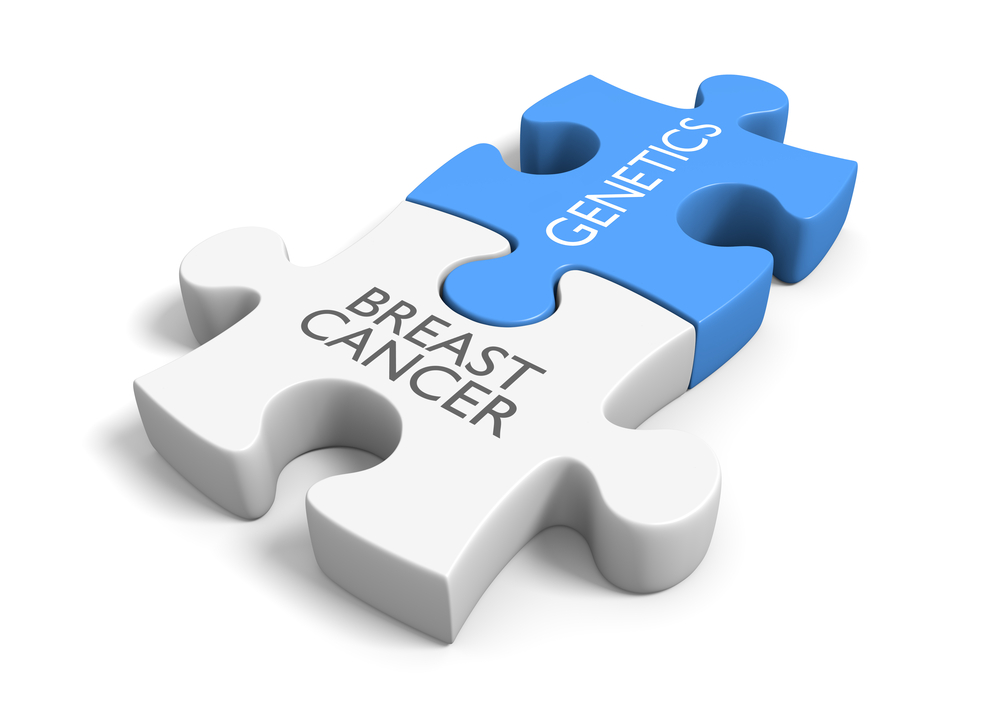- A strong family history of cancer is a good reason to get tested for the breast cancer gene.
- The presence of this gene increases your risk of developing breast and ovarian cancer by 3 to 7 times.
- To reduce risk, a common preemptive option is the removal of breast tissue and subsequent reconstruction.
We all inherit DNA from our family. Like it or not, sometimes inherited genes put us at higher risk for disease, which is the case for women who test positive for BRCA breast cancer gene mutations.
The majority of women who are carriers of this mutation have a family history of breast, ovarian and other cancers.
If this matches your family history, then you should consider genetic testing. The good news is that early detection and awareness can save lives.
What is the breast cancer gene?
Genes are short segments of DNA. The role of DNA is to instruct the cells in our body to grow, develop, function and reproduce.
While most of our DNA instructions are accurate, errors can and do occur. These DNA errors or mutations can be harmless, or may sometimes put us at increased risk of disease.
“About 1 in 500 women in the U.S. are carriers of the BRCA gene mutation,” notes plastic, reconstructive and general surgeon Dr. Christie Prendergast. “And unfortunately, if you are a carrier, you are at increased risk for developing breast and ovarian cancer.”
The majority of inherited breast cancer involves two gene mutations: BRCA1 and BRCA2. Note that everyone has these two genes, but when they contain mutations, the risk for breast, ovarian and other cancers increases.
BRCA cancer risk by the numbers
Approximately 5-10% of breast cancers are passed on from parent to child. The chances of any woman getting breast cancer in her lifetime is around 12%. However, if you have the breast cancer gene, your breast cancer risk dramatically increases by 40 to 80% – 3 to 7 times higher than women who do not carry the mutation.
If you have the BRCA1 or BRCA2 gene mutations, you are also at increased risk of developing other cancers such as ovarian (16-44% risk), colon and pancreatic cancer, and melanoma.
Men with a BRCA2 gene mutation are also at higher risk of male breast cancer and prostate cancer.
Family history risk indicators
There are factors in your family history that may indicate a higher likelihood that you may carry the breast cancer gene mutations. These include:
- Female relatives on either your mother’s or father’s side of the family who developed breast cancer before the age of 50.
- If one side of the family or one relative had both breast and ovarian cancer.
- Relatives that have triple negative breast cancer (i.e. tested negative for estrogen receptors, progesterone receptors and the human epidermal growth factor receptor 2).
- Female relatives who have had cancer in both breasts.
- There are other cancers in the family, such as colon, prostate, melanoma, pancreatic, stomach, uterine, thyroid and/or sarcoma.
- Male relatives with breast cancer.
What does genetic testing entail?
If you have any of the family history indicators mentioned previously, you may choose to undergo genetic testing to determine if you have the BRCA1 or BRCA2 gene mutations.
A genetic test involves taking a blood or saliva sample in the doctor’s office. Your genetic information will then be evaluated for abnormalities or mutations in a commercial laboratory, such as Myriad Genetic Laboratories, Ambry Genetics and GeneDx.
Typically, you will receive test results within 2-4 weeks. If you’re unsure if you should commit to genetic testing, a genetic counselor can help determine your risk profile to help you make the right decisions.
How much is it?
The cost of a breast cancer gene test is dependent on whether you’re having one or more genes tested, and whether you’re having one specific area tested for abnormalities or several different areas. Therefore, the cost of testing can range from $300 to $5,000.
In many cases, health insurance plans will cover the cost of genetic testing.
Are the BRCA mutations a cancer sentence?
No. Even though your risk is significantly higher, having the BRCA1 or BRCA2 gene mutations doesn’t necessarily mean you will develop breast cancer.
Note that the breast cancer gene can sometimes skip generations. Just because a member of the family may have genetic mutations does not mean the genes will automatically be inherited by you. The only way to confirm this is through genetic testing.
To help you make the right decisions about screening and treatment, it’s always best to discuss your cancer risk profile with a medical professional.
Next steps if you test positive
Testing positive for the BRCA mutations is a very emotional experience for any woman and it does involve making some difficult decisions. It’s imperative that you seek support through this process.
The very first step is to consult with a team of doctors that can help you understand your cancer risk profile and the best course of action to take.
“The best way to deal with the diagnosis is to find a treatment team of doctors that can clearly discuss your options, time strategy and aesthetic expectations,” says Dr. Prendergast.
And of course, involving your family in the process is very important.
Seeking out support
“Schedule a consultation with a breast oncologist who can look at your specific risk factors and guide you to a treatment plan that is best for you,” advises Dr. Prendergast.
She also encourages women to have a discussion with their breast surgeon and gynecologist as soon as possible as detection and awareness can save lives.
“You might consider joining a support group of women who also carry the BRCA gene, women who have been through the experience and have had to make similar decisions – they can help you realize you are not alone in your emotional journey,” Dr. Prendergast recommends.
Lastly, it’s important to inform your immediate family and first-degree relatives about your diagnosis — not only to obtain their support, but so they can also undergo genetic screening.
Preventative treatment to block breast cancer
“There are a number of ways to reduce your risk profile including prophylactic (preventative) removal of your breast tissue and ovaries, and/or taking medications,” informs Dr. Prendergast.
While preventative removal of tissue does not guarantee you won’t get cancer, removal of both breasts and the ovaries has been shown to reduce risk of dying from breast cancer by 56% and ovarian cancer by 80%.
Medications may help reduce risk. However, there is uncertainty in relying on medications alone as there are currently no data to prove their effectiveness to counter the BRCA1 or BRCA2 mutations.
Removing breast tissue
Choosing to remove your breast tissue is a difficult decision to make. There are many factors to consider. For instance, you may want to delay taking preventative actions if you plan to have children.
If you have the BRCA gene without cancer, you may have some flexibility with time and may be able to delay the removal of your breast tissue. If you work closely with your breast oncologist, they will guide you on optimal treatment time and recommend a surveillance strategy for your specific cancer risk profile.
Rebuilding the breast
A reconstructive plastic surgeon also plays a key role in your treatment. Unsurprisingly, “many women have concerns about aesthetic outcomes and expectations after surgery,” notes Dr. Prendergast.
It’s important to consult your plastic surgeon early as they can help you preserve as much of your skin envelope and/or nipple for a more natural reconstructive result.
Although considering reconstruction strategies ahead of time is a difficult process, share your worries with your plastic surgeon. These specialists can help ease your mind by presenting you with surgical options and setting your expectations for the end result post-surgery.









